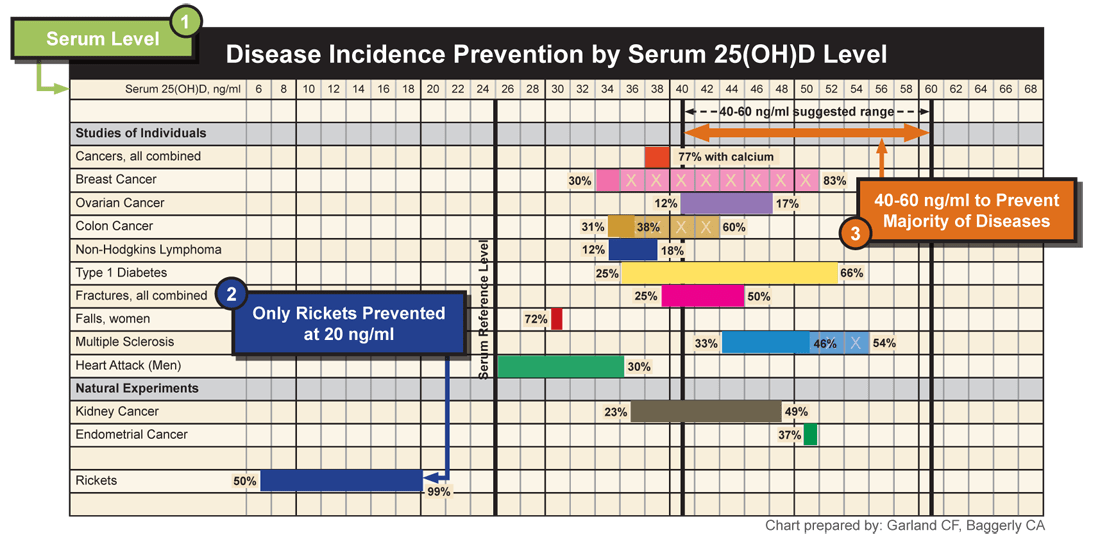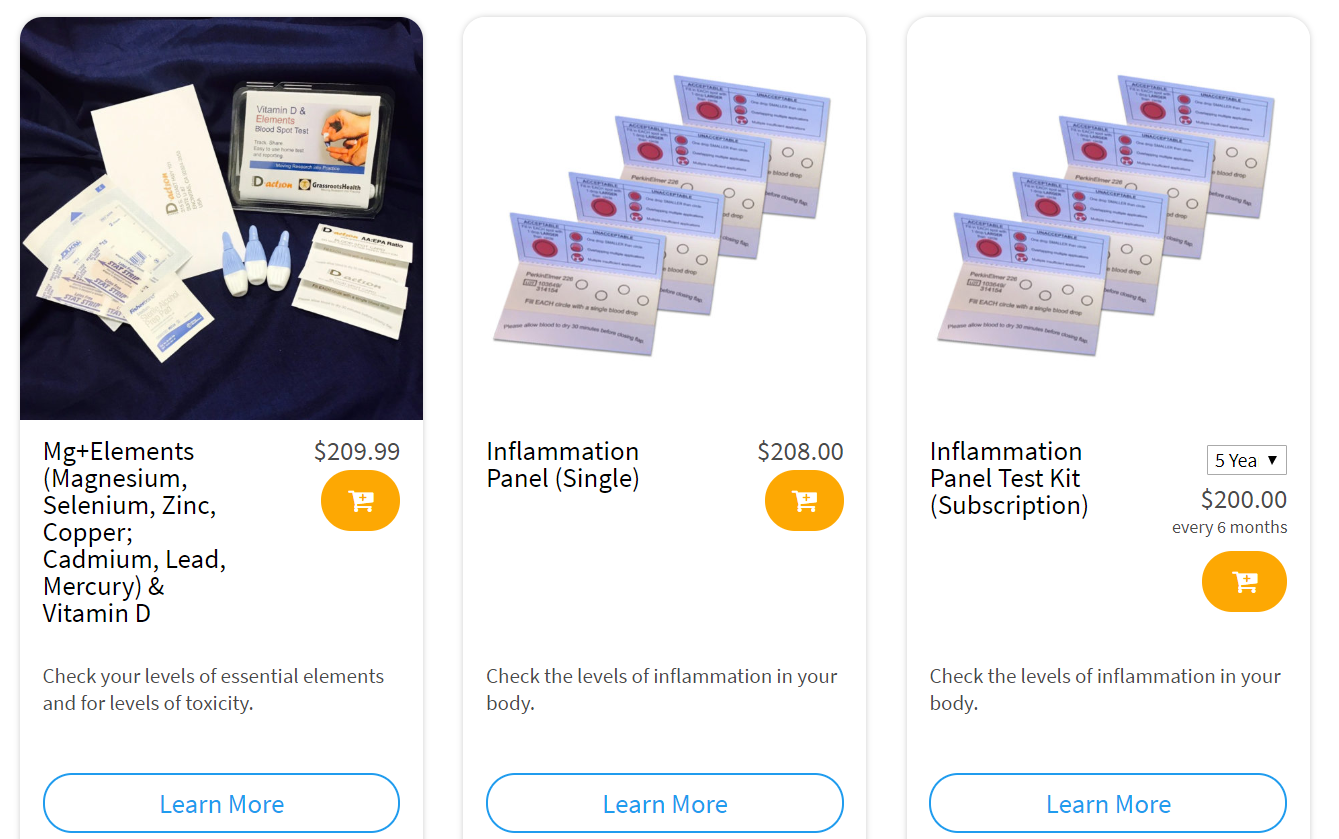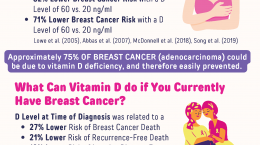Published on September 18, 2019
 In working with participants from around the world, tracking their health and their vitamin D intake and levels, we have been able to report several positive health outcomes and benefits of having a vitamin D level between 40-60 ng/ml, and in some cases, a bit higher. However, there are still cases where a participant will receive a diagnosis for a disease, regardless of their vitamin D level and daily intake. Today, we simply wanted to remind you that there really is more to good health than vitamin D alone!
In working with participants from around the world, tracking their health and their vitamin D intake and levels, we have been able to report several positive health outcomes and benefits of having a vitamin D level between 40-60 ng/ml, and in some cases, a bit higher. However, there are still cases where a participant will receive a diagnosis for a disease, regardless of their vitamin D level and daily intake. Today, we simply wanted to remind you that there really is more to good health than vitamin D alone!
Vitamin D May Reduce but Not Eliminate Risk
A higher level of vitamin D does reduce the risk of many diseases, including several different types of cancer, heart disease, and more, but it does not eliminate it. Our Disease Incidence Prevention Chart illustrates this concept by plotting the findings from 15 peer-reviewed, published papers regarding vitamin D and certain conditions. It uses a reference level of 25 ng/ml, which means that the percentage reductions are all based on raising the vitamin D level from 25 ng/ml to the amount showing the percentage reduction along each bar (25 ng/ml is the about the average vitamin D level in the US and Canada).
Take breast cancer risk as an example. The research referenced shows a 30% reduction in incidence when the vitamin D level is 34 ng/ml compared to 25 ng/ml, but an 83% reduction when the serum level is 50 ng/ml compared to 25 ng/ml. While an 83% reduction demonstrates the importance of maintaining a higher level of vitamin D to help prevent breast cancer (50 ng/ml in this case), it is not a 100% reduction in risk. It is important to be aware that there are still additional factors that affect the incidence of breast cancer (and other diseases).
A Disease Incidence Prevention chart specific to pregnancy, birth, and childhood health outcomes can also be found here.
Other Factors Contribute to Health & Disease
Some risk factors common for many diseases that can be controlled to some extent include diet, exercise, weight, smoking, and alcohol consumption. Health outcomes can be affected by taking steps to keep each of these risk factors within a healthy range. Genetic components and our environment can also affect our risk of many diseases. As with the benefit of vitamin D, each risk factor has a varying level of influence depending on the specific disease in question.
Tracking Your Data is Important to YOU!
The questionnaire completed by all GrassrootsHealth participants with each blood spot test helps you see what these and other factors may exist in modifying your health outcomes, based not only on your data but with comparisons to 1000’s of others’ data. Plus, it helps you get a better understanding of how some of these outcomes might affect or be affected by vitamin D and other nutrients. Your answers over time will help show changes — is what you are doing working for you and your health?
What other factors could be contributing to your health… that you can measure?
Testing your vitamin D level regularly and taking daily steps to keep it at a target level of 40-60 ng/ml (100-150 nmol/L) is important for all stages of health. Through GrassrootsHealth Nutrient Research Institute, you can also track your omega-3 status, inflammation levels, and levels of essential and toxic nutrients. Find out your levels today! Log on to the shop (click the link below) to get your tests and see for yourself if your level can be improved.
Make sure you track your results before and after, about every 6 months!
Click Here to Access the Shop Page
How can I track my nutrient intake and levels over time?
To help you track your supplement use and nutrient levels, GrassrootsHealth Nutrient Research Institute has created an online tracking system called myData-myAnswers. For each specific supplement, you can track what days you take it, how much, and many other details. This will help you know your true supplemental intake and what patterns of use work for you to reach and maintain optimum nutrient levels. Check it out today!








